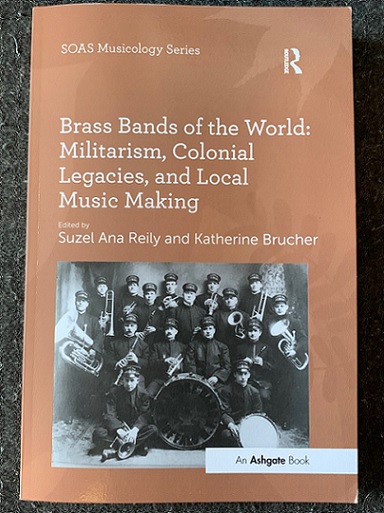

First published in 2013 and subsequently in paperback in 2016, this invaluable academic research explores the traditions, adaptations and influences of brass band ensembles of various guises and structures across the globe.
Through a series of nine chapters the ‘brass band’ (which readily incorporates woodwind and traditional instrumentation) is placed within the historical, social, political and musical context of its geographic boundaries - from the brass and military bands of Britain to the community ensembles of the Sinaloan culture in Mexico.
Fascinating insight
Each (written by leading academics) provides a fascinating insight into how they have come to represent the communities and institutions from which they derive - from the working class areas of the UK and Minais Gerais in Brazil, to the military bands of Japan and South Korea, the colourful Ulster flute parade bands and the ministry passion of Christmas bands in South Africa, to the hybrid ensembles found in Portugal, Mexico and New Orleans.
Edited by Suzel Ana Reily, a reader in ethnomusicology and social anthropology at Queen’s University Belfast, and Katherine Brucher, assistant professor of music at De Paul University in Chicago, the writing is detailed, lucid and informed; the opening chapter from Prof Trevor Herbert on ‘Brass and Military Bands in Britain – Performance domains, the factors that construct them and their influence’, essential reading for anyone, from student to journalist, who has more than a passing interest in the movement.
His assertion that the brass band movement in the UK was not the result of a lineal trajectory of musical development, but a ‘finished form’ catalyst that exploded from coincidental strands of “demographic, economic, commercial, technological and cultural upheavals” during a very specific mid-Victorian time frame, is eloquently and persuasively argued.
Furthermore, understanding that these are still the very elements that we now have to proactively react with to secure the movement’s 21st century future is a sobering addendum. History needs to repeat itself.
His assertion that the brass band movement in the UK was not the result of a lineal trajectory of musical development, but a ‘finished form’ catalyst that exploded from coincidental strands of “demographic, economic, commercial, technological and cultural upheavals” during a very specific mid-Victorian time frame, is eloquently and persuasively argued.
Peeled away
Elsewhere layers of cross cultural ignorance are peeled away – from the roots and development of Sinaloan brass bands to the response of Japanese composers to the influence of western military marches in the period up the Second World.
The examination of the representational power of the New Orleans Brass Band culture is incredibly pertinent today, as is the remarkable Christian ministry of Christmas Bands in the Western Cape of South Africa (so called as they traditionally played on Christmas Eve through to Christmas Day morning).
It all adds up to a book well worth seeking out (its costs about £15.00 in paperback) and adding to any musical collection.
Iwan Fox









